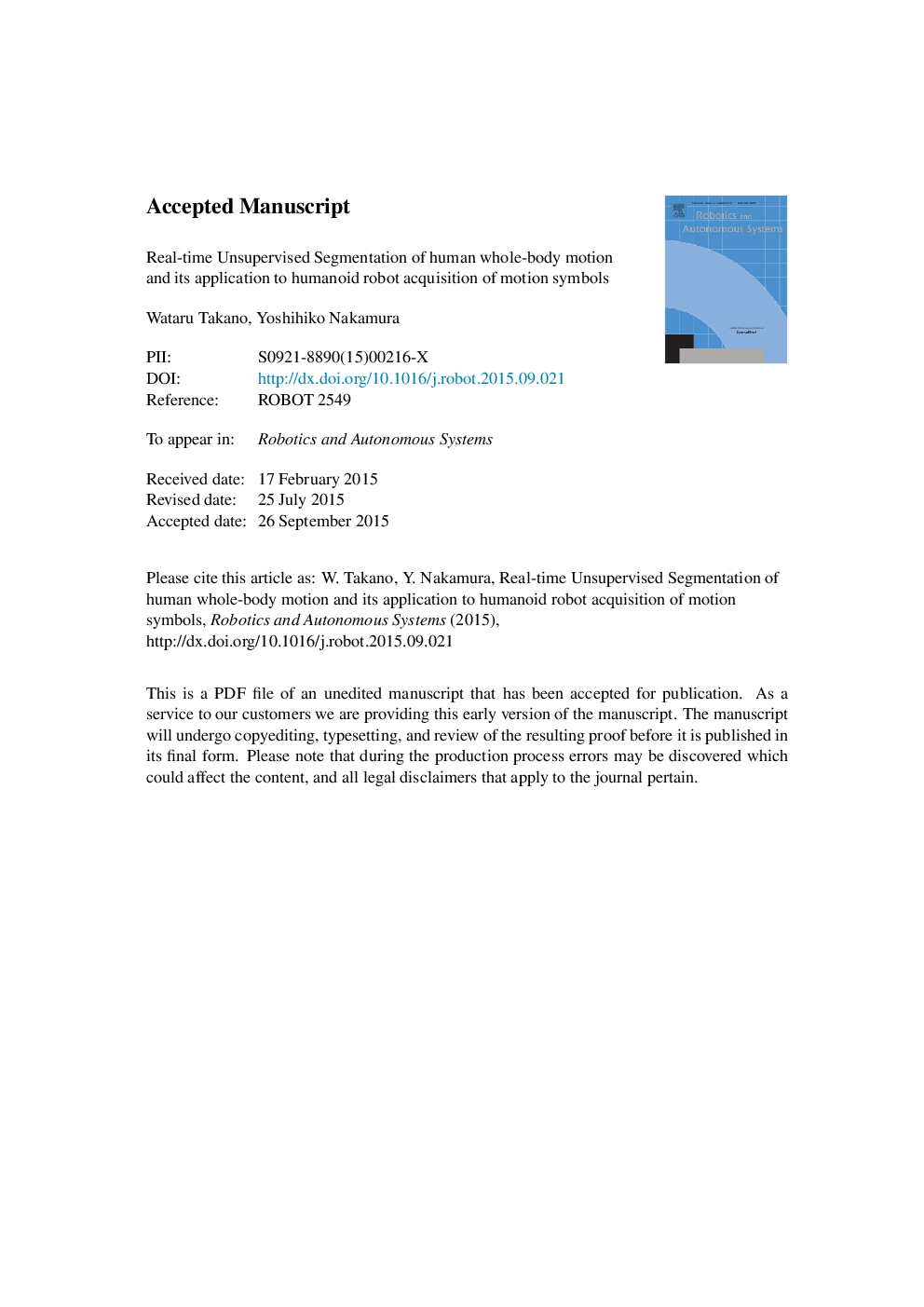| کد مقاله | کد نشریه | سال انتشار | مقاله انگلیسی | نسخه تمام متن |
|---|---|---|---|---|
| 10326708 | 679567 | 2016 | 31 صفحه PDF | دانلود رایگان |
عنوان انگلیسی مقاله ISI
Real-time Unsupervised Segmentation of human whole-body motion and its application to humanoid robot acquisition of motion symbols
ترجمه فارسی عنوان
تقسیمبندی واقعی در زمان واقعی حرکت بدن انسان و کاربرد آن در دستیابی انسان به رباتها از نمادهای حرکت
دانلود مقاله + سفارش ترجمه
دانلود مقاله ISI انگلیسی
رایگان برای ایرانیان
کلمات کلیدی
تقسیم حرکت ابتدای حرکت، یادگیری رقابتی،
موضوعات مرتبط
مهندسی و علوم پایه
مهندسی کامپیوتر
هوش مصنوعی
چکیده انگلیسی
An interactive loop between motion recognition and motion generation is a fundamental mechanism for humans and humanoid robots. We have been developing an intelligent framework for motion recognition and generation based on symbolizing motion primitives. The motion primitives are encoded into Hidden Markov Models (HMMs), which we call “motion symbols”. However, to determine the motion primitives to use as training data for the HMMs, this framework requires a manual segmentation of human motions. Essentially, a humanoid robot is expected to participate in daily life and must learn many motion symbols to adapt to various situations. For this use, manual segmentation is cumbersome and impractical for humanoid robots. In this study, we propose a novel approach to segmentation, the Real-time Unsupervised Segmentation (RUS) method, which comprises three phases. In the first phase, short human movements are encoded into feature HMMs. Seamless human motion can be converted to a sequence of these feature HMMs. In the second phase, the causality between the feature HMMs is extracted. The causality data make it possible to predict movement from observation. In the third phase, movements having a large prediction uncertainty are designated as the boundaries of motion primitives. In this way, human whole-body motion can be segmented into a sequence of motion primitives. This paper also describes an application of RUS to AUtonomous Symbolization of motion primitives (AUS). Each derived motion primitive is classified into an HMM for a motion symbol, and parameters of the HMMs are optimized by using the motion primitives as training data in competitive learning. The HMMs are gradually optimized in such a way that the HMMs can abstract similar motion primitives. We tested the RUS and AUS frameworks on captured human whole-body motions and demonstrated the validity of the proposed framework.
ناشر
Database: Elsevier - ScienceDirect (ساینس دایرکت)
Journal: Robotics and Autonomous Systems - Volume 75, Part B, January 2016, Pages 260-272
Journal: Robotics and Autonomous Systems - Volume 75, Part B, January 2016, Pages 260-272
نویسندگان
Wataru Takano, Yoshihiko Nakamura,
